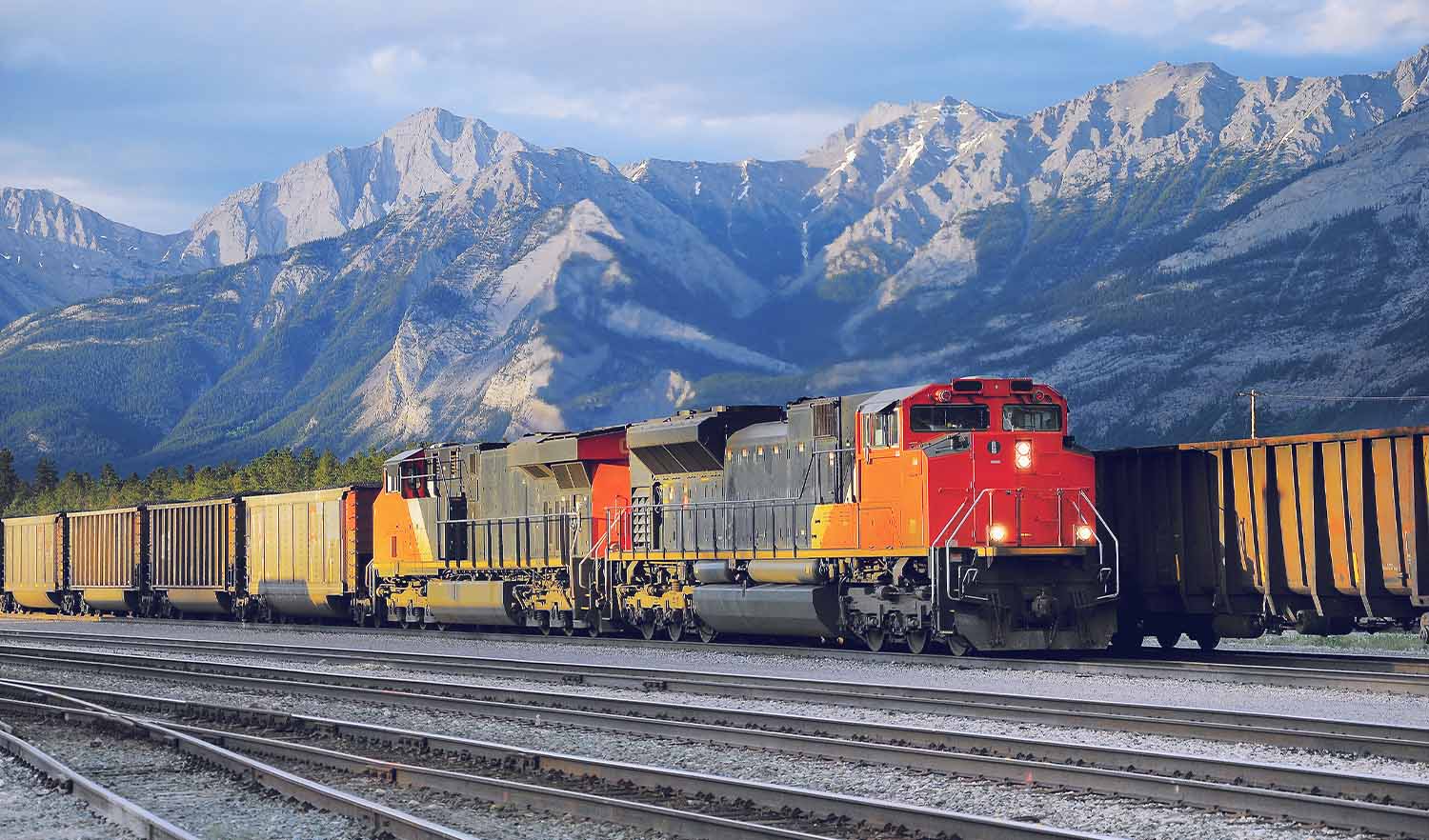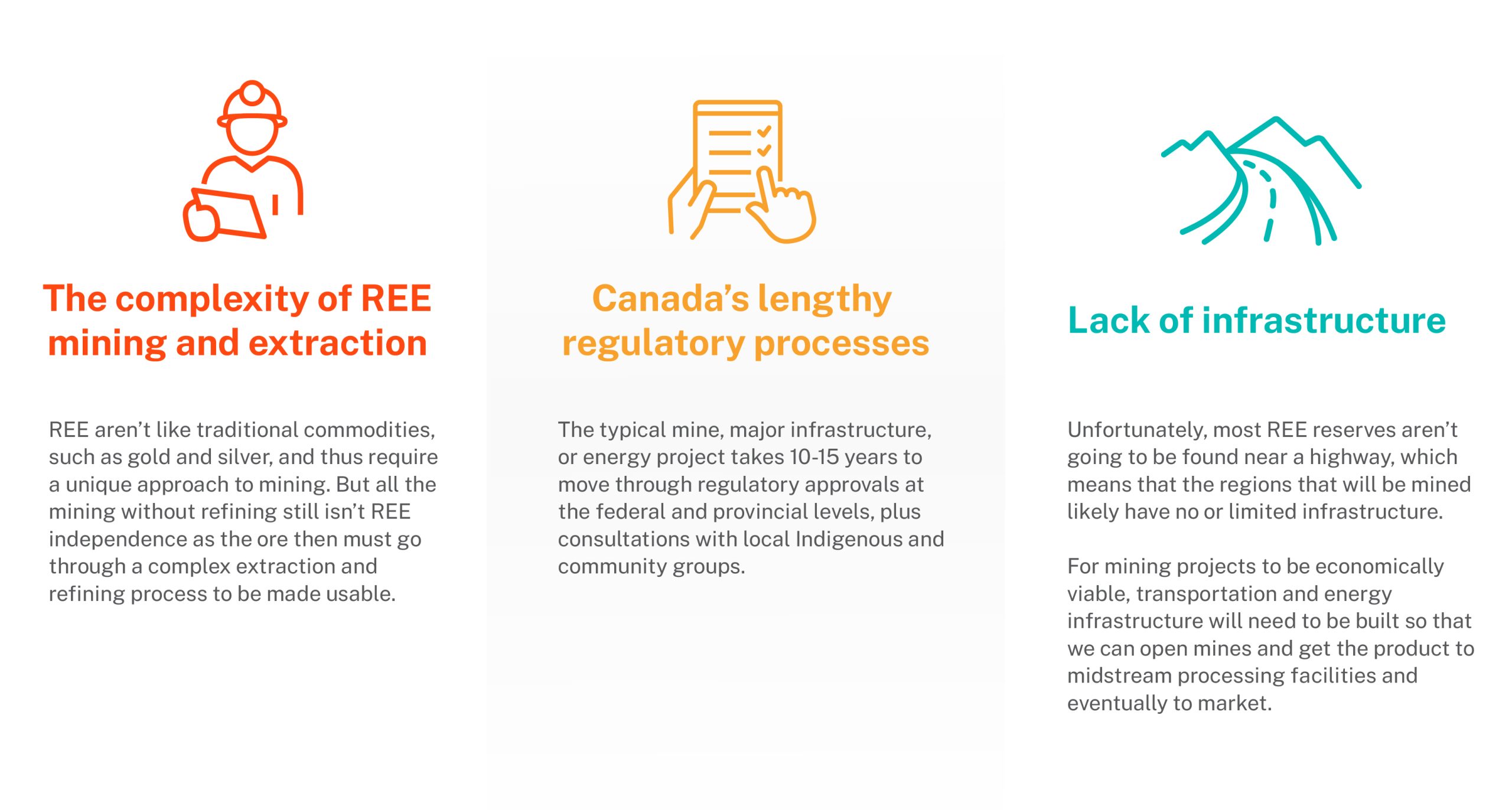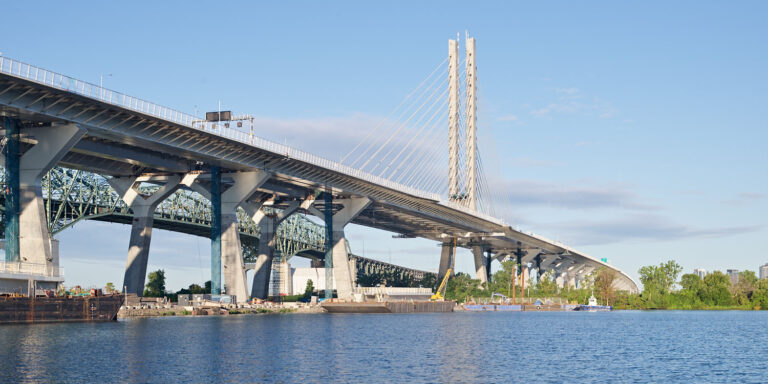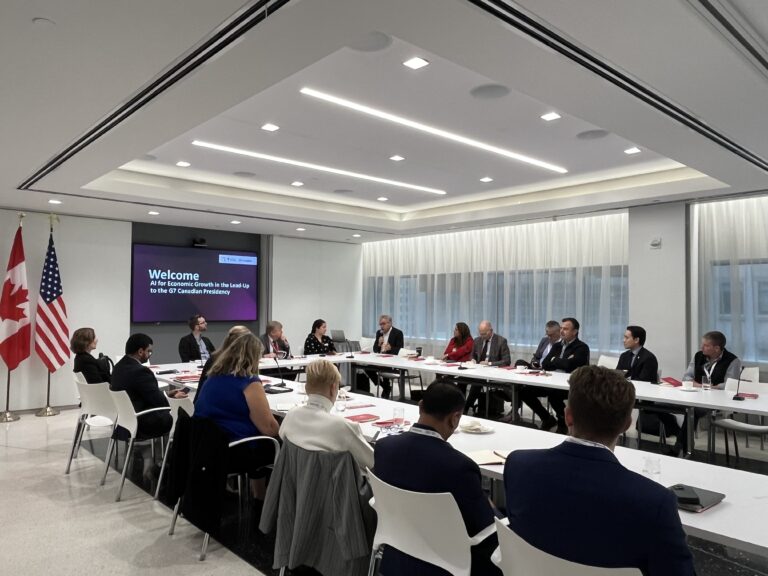Blog /
Policy Matters: The Importance of Building Rare Earth Elements (REE) Supply Chain Resilience in Canada
Policy Matters: The Importance of Building Rare Earth Elements (REE) Supply Chain Resilience in Canada
If we don’t act now to build a resilient, domestic REE supply chain, we’ll lose out on a once in a generation opportunity and remain dependent on the inputs of other countries that are less sustainable and responsible than us.


Rare earth elements (REE) are one of the 31 critical minerals identified by the government as being essential to our green growth and economic security. REE are also part of an even more exclusive group of six critical minerals initially prioritized by the Canada Critical Minerals Strategy for “their distinct potential to spur Canadian economic growth and their necessity as inputs for priority supply chains.”
Before Canada can take advantage of our vast REE deposits, we have some significant challenges to overcome — and fast! If we don’t act now to build a resilient, domestic REE supply chain, we’ll lose out on a once-in-a-generation opportunity and remain dependent on the inputs of other countries that are less sustainable and responsible than us.

The Importance of a Domestic REE Supply Chain
Canada has some of the largest known reserves and resources of REE in the world, estimated at 15.1 million tonnes in 2022.
Even so, a new REE mine hasn’t been opened in decades and we have no domestic separation and refining facilities, a key step in turning rare earth elements into usable forms. Due to our lack of a REE supply chain, we import the majority of our REE and REE-enabled inputs from China, the world’s largest producer of rare earth elements.
REE are key components in many electronics, clean energy, aerospace, automotive and defence technologies. But the greatest global demand for REE is permanent magnets, which are found in wind turbines and electric vehicles — two technologies poised to play a significant role in Canada’s green growth and energy security.

However, permanent magnets require a heavy REE called dysprosium (REE are categorized as either light or heavy based on their atomic number). China is currently the only commercial producer of heavy REE, allowing it to dominate the permanent magnet market.
Developing a resilient REE supply chain will reduce Canada’s dependence on REE imports and increase our energy independence and security, while also significantly adding to our economic prosperity.

The Challenges
Now, you might be asking the question, “If rare earth elements are so important to our future and we have the largest known reserves and resources in the world, why don’t we already have a REE supply chain?”
To answer that question, let’s take a quick look at some of the challenges we mentioned earlier.


REE Projects in the Works
Despite the challenges, there are REE projects underway, working to reengage the supply chain back in Canada.
Ucore (a Canadian Chamber of Commerce Critical Minerals Council member) has a commercial demonstration plant in Kingston, Ontario, separating heavy REE from light REE and then further refining to highly pure individual REE oxides. The next phase of the project is to take the demo plant and plug it into a full-size commercial plant in Alexandria, Louisiana, and eventually a second plant in Canada.

The Role of Government in REE Supply Chain Development
Government will play an important role in jumpstarting the REE supply chain through strategic programs and policies, like:
- Incorporating critical mineral pre-production costs into the new Critical Mineral Exploration Tax Credit, which would spur production by lowering financing costs to get new mines up and running.
- Offering tax incentives to encourage more critical minerals processing in Canada and secure the important midstream refining and processing part of the supply chain.
- Accelerating the regulatory cycle will help new mines get up and running quicker and ensure necessary mine life extensions.
- Doing due diligence on the mine proposals so that the mining opportunities with the best chance of bringing a critical mineral to market and staying economically viable are prioritized.
- Investing in expanding the reach and resilience of transportation and energy infrastructure to remote regions to allow for REE exploration, mining and delivery.
While government investment and support are vital, it’s the private sector that will ultimately lead this sector. We have an opportunity to get ahead of our competitors by tapping into our legacy of innovation and entrepreneurship and asking questions about current processes and standards that will spur new ideas.
Other Blogs

Navigating Net Zero

Lodestar Structures: Revolutionizing Community Infrastructure




